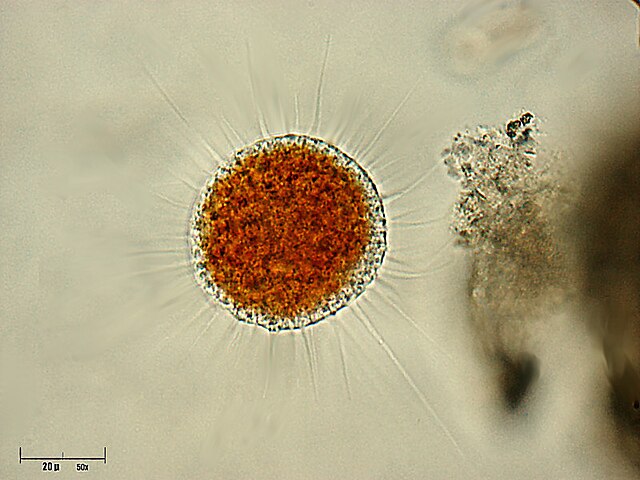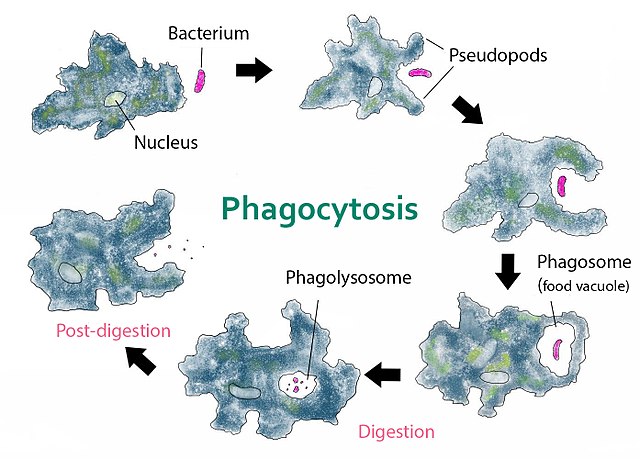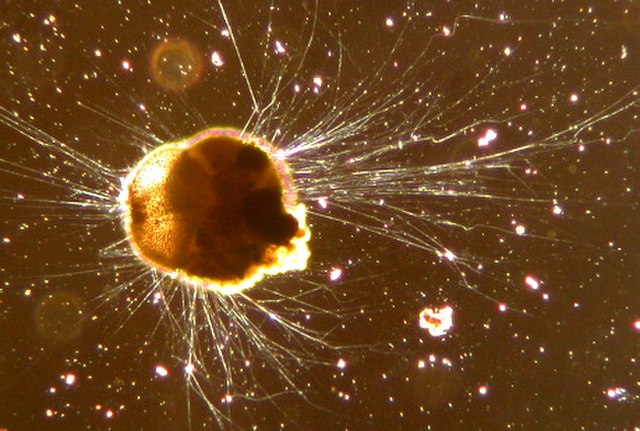The vampyrellids, colloquially known as vampire amoebae, are a group of free-living predatory amoebae classified as part of the lineage Endomyxa. They are distinguished from other groups of amoebae by their irregular cell shape with propensity to fuse and split like plasmodial organisms, and their life cycle with a digestive cyst stage that digests the gathered food. They appear worldwide in marine, brackish, freshwater and soil habitats. They are important predators of an enormous variety of microscopic organisms, from algae to fungi and animals. They are also known as aconchulinid amoebae.
Vampyrellida
1899 illustration of Vampyrella invading Spirogyra
An amoeba, often called an amoeboid, is a type of cell or unicellular organism with the ability to alter its shape, primarily by extending and retracting pseudopods. Amoebae do not form a single taxonomic group; instead, they are found in every major lineage of eukaryotic organisms. Amoeboid cells occur not only among the protozoa, but also in fungi, algae, and animals.
Clockwise from top right: Amoeba proteus, Actinophrys sol, Acanthamoeba sp., Nuclearia thermophila., Euglypha acanthophora, neutrophil ingesting bacteria.
Amoeba phagocytosis of a bacterium
Foraminifera have reticulose (net-like) pseudopods, and many species are visible with the naked eye
Neutrophil (white blood cell) engulfing anthrax bacteria






